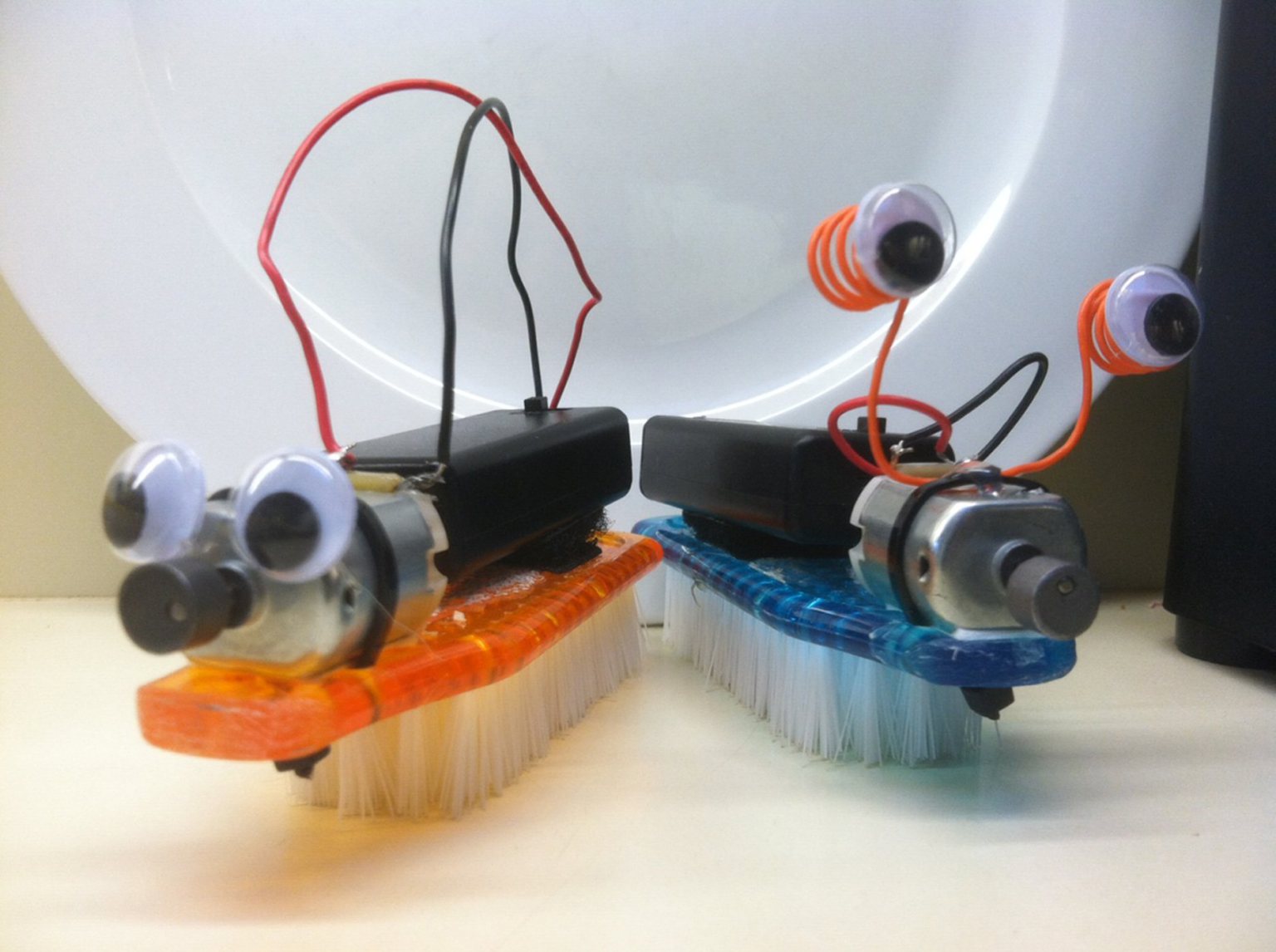
Sometimes you need a little help, and a robot can be the perfect buddy to join in and save the day. A DusterBot will hunt down the dust bunnies under your bed. It’ll buzz around helping you scrub your floors or desk.
You can’t control where a DusterBot goes or what it does, but that’s part of the fun. And forget about getting things done perfectly or quickly!
At a recent Maker Faire, Charley and Dakota Peebler and Stella and Giovanni Escobar-Rigon, all under 8 years old, taught visitors how to make all kinds of buzzy bristlebots that they called HumBugs.
Lenore Edman and Windell Oskay of Evil Mad Scientist Labs got a lot of people excited about bristlebots. They showed millions of people how to use a vibrating motor and battery on top of a toothbrush. Researchers at MIT and Harvard use a similar bot design to study how birds form flocks or how fish swim in schools.











